Kevin Chan
SeLR: Sparsity-enhanced Lagrangian Relaxation for Computation Offloading at the Edge
May 01, 2025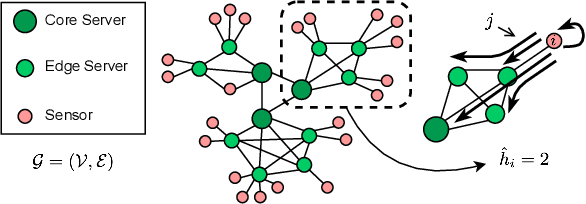
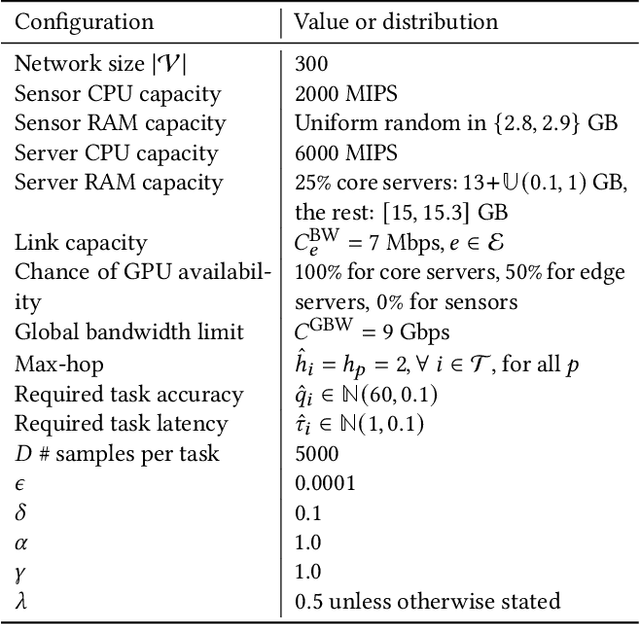

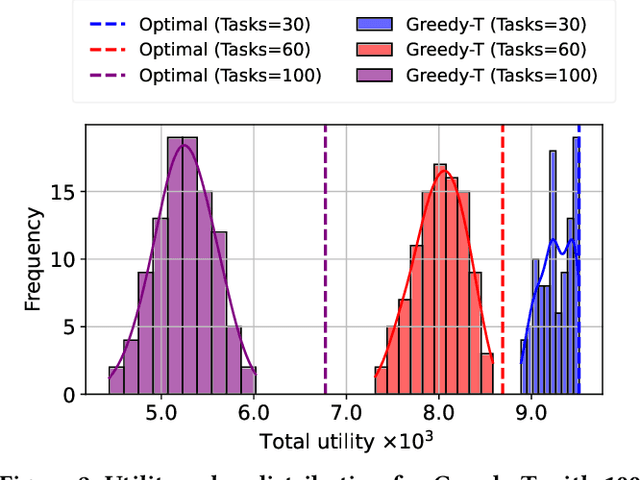
Abstract:This paper introduces a novel computational approach for offloading sensor data processing tasks to servers in edge networks for better accuracy and makespan. A task is assigned with one of several offloading options, each comprises a server, a route for uploading data to the server, and a service profile that specifies the performance and resource consumption at the server and in the network. This offline offloading and routing problem is formulated as mixed integer programming (MIP), which is non-convex and HP-hard due to the discrete decision variables associated to the offloading options. The novelty of our approach is to transform this non-convex problem into iterative convex optimization by relaxing integer decision variables into continuous space, combining primal-dual optimization for penalizing constraint violations and reweighted $L_1$-minimization for promoting solution sparsity, which achieves better convergence through a smoother path in a continuous search space. Compared to existing greedy heuristics, our approach can achieve a better Pareto frontier in accuracy and latency, scales better to larger problem instances, and can achieve a 7.72--9.17$\times$ reduction in computational overhead of scheduling compared to the optimal solver in hierarchically organized edge networks with 300 nodes and 50--100 tasks.
Generalizing Biased Backpressure Routing and Scheduling to Wireless Multi-hop Networks with Advanced Air-interfaces
Apr 30, 2025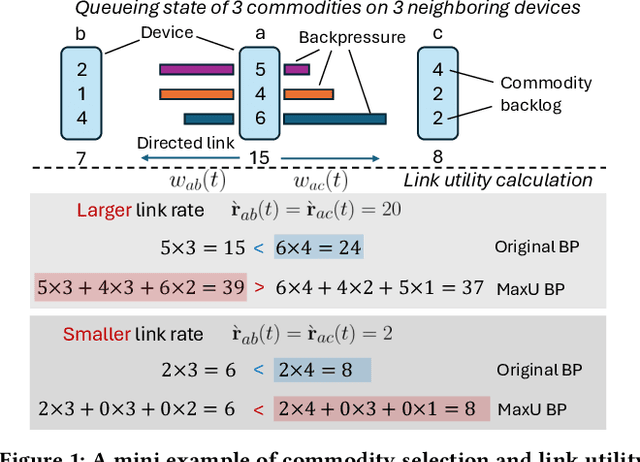

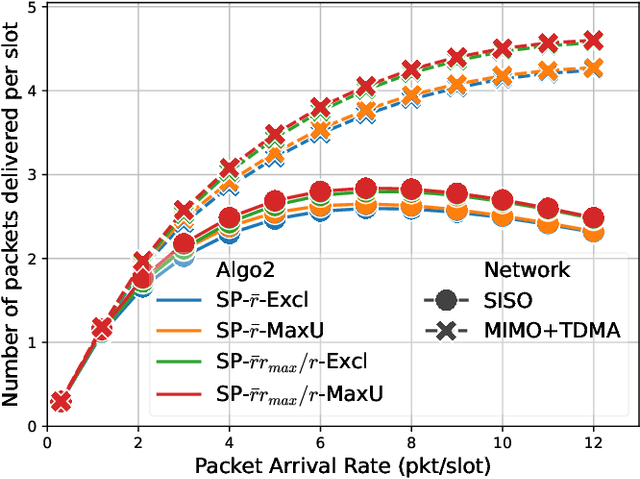
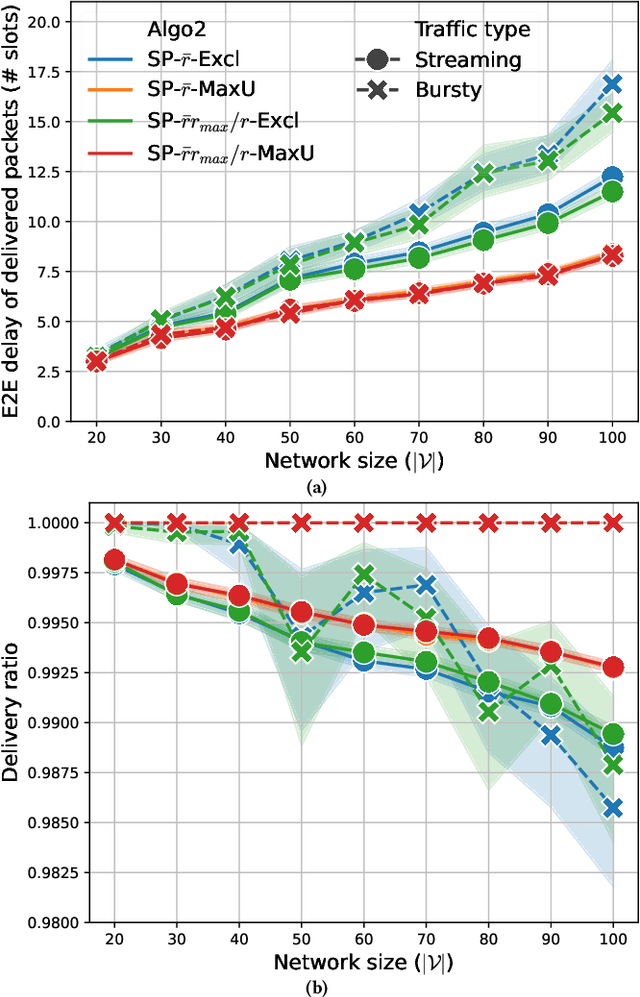
Abstract:Backpressure (BP) routing and scheduling is a well-established resource allocation method for wireless multi-hop networks, known for its fully distributed operations and proven maximum queue stability. Recent advances in shortest path-biased BP routing (SP-BP) mitigate shortcomings such as slow startup and random walk, but exclusive link-level commodity selection still suffers from the last-packet problem and bandwidth underutilization. Moreover, classic BP routing implicitly assumes single-input-single-output (SISO) transceivers, which can lead to the same packets being scheduled on multiple outgoing links for multiple-input-multiple-output (MIMO) transceivers, causing detouring and looping in MIMO networks. In this paper, we revisit the foundational Lyapunov drift theory underlying BP routing and demonstrate that exclusive commodity selection is unnecessary, and instead propose a Max-Utility link-sharing method. Additionally, we generalize MaxWeight scheduling to MIMO networks by introducing attributed capacity hypergraphs (ACH), an extension of traditional conflict graphs for SISO networks, and by incorporating backlog reassignment into scheduling iterations to prevent redundant packet routing. Numerical evaluations show that our approach substantially mitigates the last-packet problem in state-of-the-art (SOTA) SP-BP under lightweight traffic, and slightly expands the network capacity region for heavier traffic.
Joint Task Offloading and Routing in Wireless Multi-hop Networks Using Biased Backpressure Algorithm
Dec 19, 2024

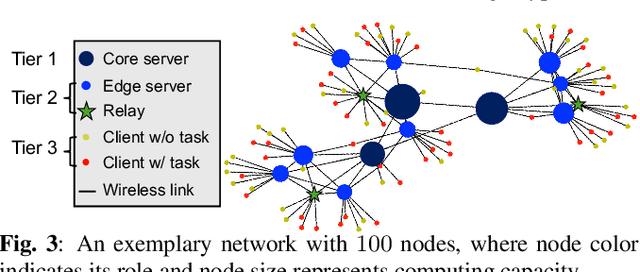
Abstract:A significant challenge for computation offloading in wireless multi-hop networks is the complex interaction among traffic flows in the presence of interference. Existing approaches often ignore these key effects and/or rely on outdated queueing and channel state information. To fill these gaps, we reformulate joint offloading and routing as a routing problem on an extended graph with physical and virtual links. We adopt the state-of-the-art shortest path-biased Backpressure routing algorithm, which allows the destination and the route of a job to be dynamically adjusted at every time step based on network-wide long-term information and real-time states of local neighborhoods. In large networks, our approach achieves smaller makespan than existing approaches, such as separated Backpressure offloading and joint offloading and routing based on linear programming.
Fully Distributed Online Training of Graph Neural Networks in Networked Systems
Dec 08, 2024Abstract:Graph neural networks (GNNs) are powerful tools for developing scalable, decentralized artificial intelligence in large-scale networked systems, such as wireless networks, power grids, and transportation networks. Currently, GNNs in networked systems mostly follow a paradigm of `centralized training, distributed execution', which limits their adaptability and slows down their development cycles. In this work, we fill this gap for the first time by developing a communication-efficient, fully distributed online training approach for GNNs applied to large networked systems. For a mini-batch with $B$ samples, our approach of training an $L$-layer GNN only adds $L$ rounds of message passing to the $LB$ rounds required by GNN inference, with doubled message sizes. Through numerical experiments in graph-based node regression, power allocation, and link scheduling in wireless networks, we demonstrate the effectiveness of our approach in training GNNs under supervised, unsupervised, and reinforcement learning paradigms.
Adversarial Plannning
May 01, 2022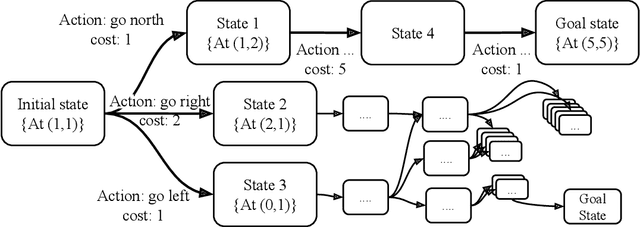
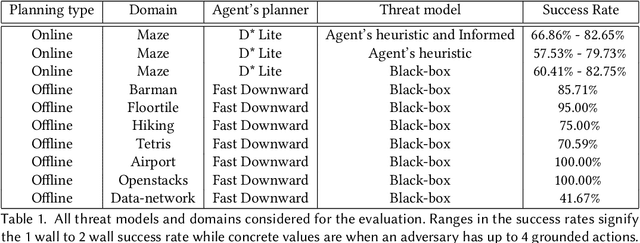
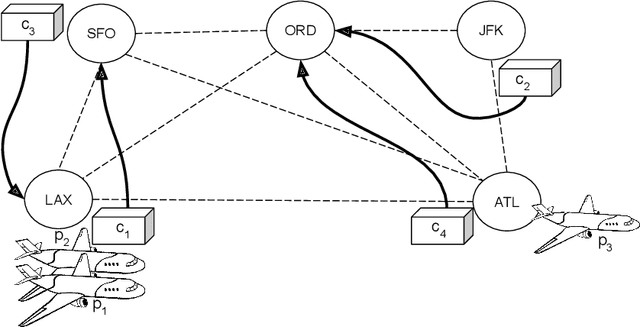

Abstract:Planning algorithms are used in computational systems to direct autonomous behavior. In a canonical application, for example, planning for autonomous vehicles is used to automate the static or continuous planning towards performance, resource management, or functional goals (e.g., arriving at the destination, managing fuel fuel consumption). Existing planning algorithms assume non-adversarial settings; a least-cost plan is developed based on available environmental information (i.e., the input instance). Yet, it is unclear how such algorithms will perform in the face of adversaries attempting to thwart the planner. In this paper, we explore the security of planning algorithms used in cyber- and cyber-physical systems. We present two $\textit{adversarial planning}$ algorithms-one static and one adaptive-that perturb input planning instances to maximize cost (often substantially so). We evaluate the performance of the algorithms against two dominant planning algorithms used in commercial applications (D* Lite and Fast Downward) and show both are vulnerable to extremely limited adversarial action. Here, experiments show that an adversary is able to increase plan costs in 66.9% of instances by only removing a single action from the actions space (D* Lite) and render 70% of instances from an international planning competition unsolvable by removing only three actions (Fast Forward). Finally, we show that finding an optimal perturbation in any search-based planning system is NP-hard.
Communication-Efficient Device Scheduling for Federated Learning Using Stochastic Optimization
Jan 19, 2022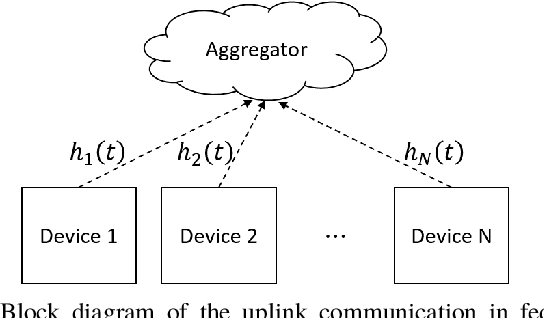
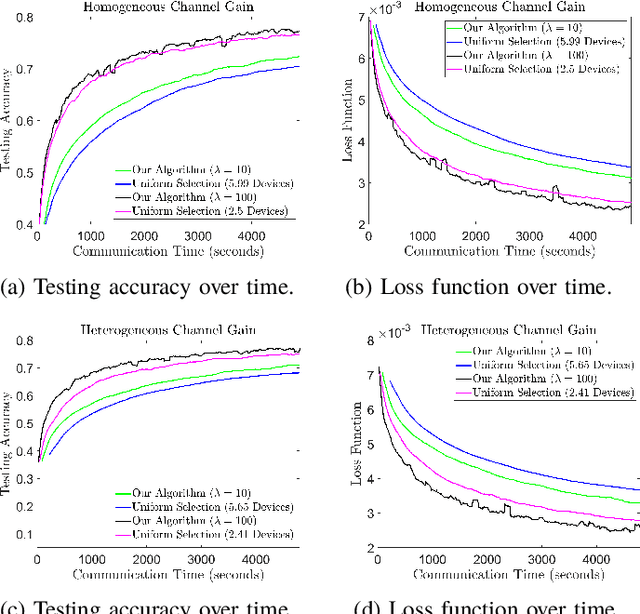
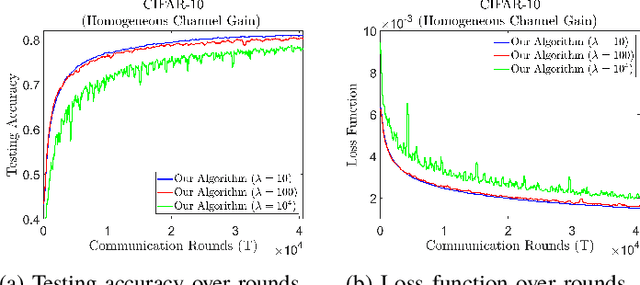
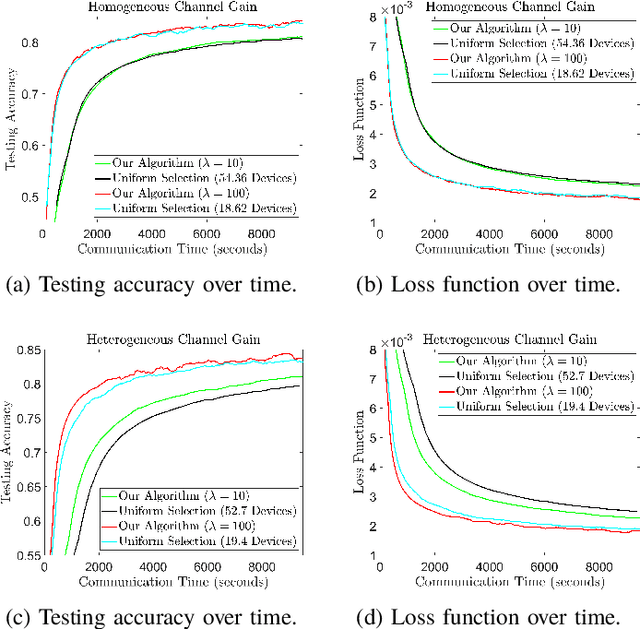
Abstract:Federated learning (FL) is a useful tool in distributed machine learning that utilizes users' local datasets in a privacy-preserving manner. When deploying FL in a constrained wireless environment; however, training models in a time-efficient manner can be a challenging task due to intermittent connectivity of devices, heterogeneous connection quality, and non-i.i.d. data. In this paper, we provide a novel convergence analysis of non-convex loss functions using FL on both i.i.d. and non-i.i.d. datasets with arbitrary device selection probabilities for each round. Then, using the derived convergence bound, we use stochastic optimization to develop a new client selection and power allocation algorithm that minimizes a function of the convergence bound and the average communication time under a transmit power constraint. We find an analytical solution to the minimization problem. One key feature of the algorithm is that knowledge of the channel statistics is not required and only the instantaneous channel state information needs to be known. Using the FEMNIST and CIFAR-10 datasets, we show through simulations that the communication time can be significantly decreased using our algorithm, compared to uniformly random participation.
Pareto GAN: Extending the Representational Power of GANs to Heavy-Tailed Distributions
Jan 22, 2021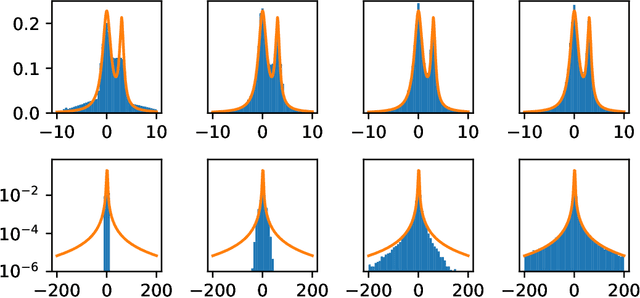
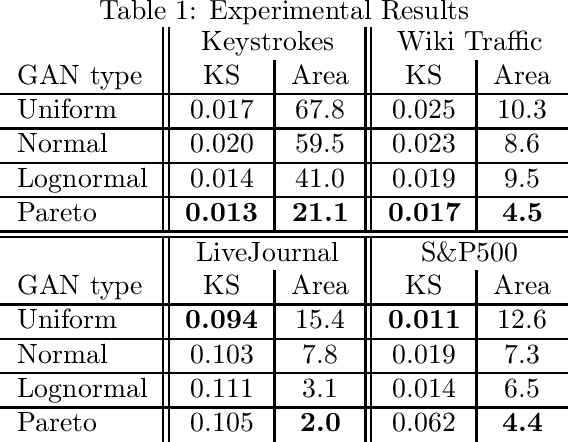
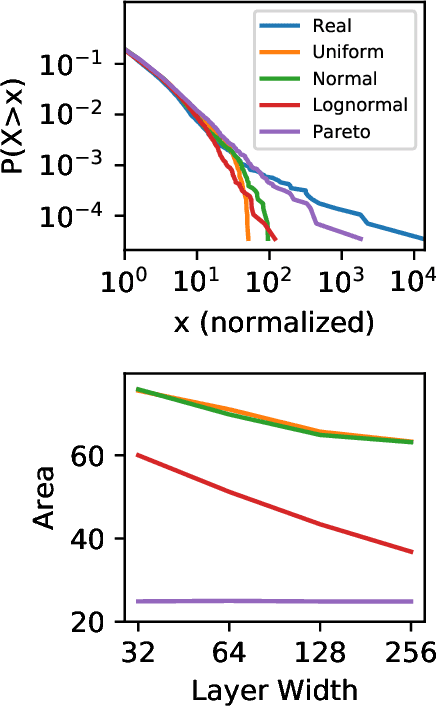

Abstract:Generative adversarial networks (GANs) are often billed as "universal distribution learners", but precisely what distributions they can represent and learn is still an open question. Heavy-tailed distributions are prevalent in many different domains such as financial risk-assessment, physics, and epidemiology. We observe that existing GAN architectures do a poor job of matching the asymptotic behavior of heavy-tailed distributions, a problem that we show stems from their construction. Additionally, when faced with the infinite moments and large distances between outlier points that are characteristic of heavy-tailed distributions, common loss functions produce unstable or near-zero gradients. We address these problems with the Pareto GAN. A Pareto GAN leverages extreme value theory and the functional properties of neural networks to learn a distribution that matches the asymptotic behavior of the marginal distributions of the features. We identify issues with standard loss functions and propose the use of alternative metric spaces that enable stable and efficient learning. Finally, we evaluate our proposed approach on a variety of heavy-tailed datasets.
Topological Effects on Attacks Against Vertex Classification
Mar 12, 2020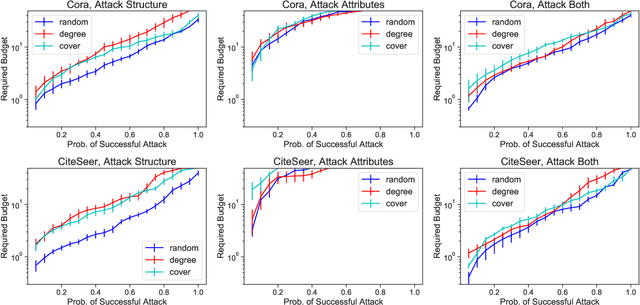



Abstract:Vertex classification is vulnerable to perturbations of both graph topology and vertex attributes, as shown in recent research. As in other machine learning domains, concerns about robustness to adversarial manipulation can prevent potential users from adopting proposed methods when the consequence of action is very high. This paper considers two topological characteristics of graphs and explores the way these features affect the amount the adversary must perturb the graph in order to be successful. We show that, if certain vertices are included in the training set, it is possible to substantially an adversary's required perturbation budget. On four citation datasets, we demonstrate that if the training set includes high degree vertices or vertices that ensure all unlabeled nodes have neighbors in the training set, we show that the adversary's budget often increases by a substantial factor---often a factor of 2 or more---over random training for the Nettack poisoning attack. Even for especially easy targets (those that are misclassified after just one or two perturbations), the degradation of performance is much slower, assigning much lower probabilities to the incorrect classes. In addition, we demonstrate that this robustness either persists when recently proposed defenses are applied, or is competitive with the resulting performance improvement for the defender.
MaxHedge: Maximising a Maximum Online with Theoretical Performance Guarantees
Oct 28, 2018Abstract:We introduce a new online learning framework where, at each trial, the learner is required to select a subset of actions from a given known action set. Each action is associated with an energy value, a reward and a cost. The sum of the energies of the actions selected cannot exceed a given energy budget. The goal is to maximise the cumulative profit, where the profit obtained on a single trial is defined as the difference between the maximum reward among the selected actions and the sum of their costs. Action energy values and the budget are known and fixed. All rewards and costs associated with each action change over time and are revealed at each trial only after the learner's selection of actions. Our framework encompasses several online learning problems where the environment changes over time; and the solution trades-off between minimising the costs and maximising the maximum reward of the selected subset of actions, while being constrained to an action energy budget. The algorithm that we propose is an efficient and very scalable unifying approach which is capable of solving our general problem. Hence, our method solves several online learning problems which fall into this general framework.
Adaptive Federated Learning in Resource Constrained Edge Computing Systems
Aug 02, 2018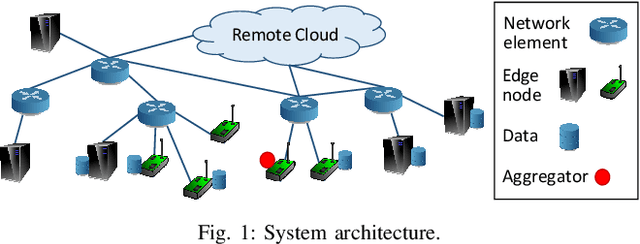
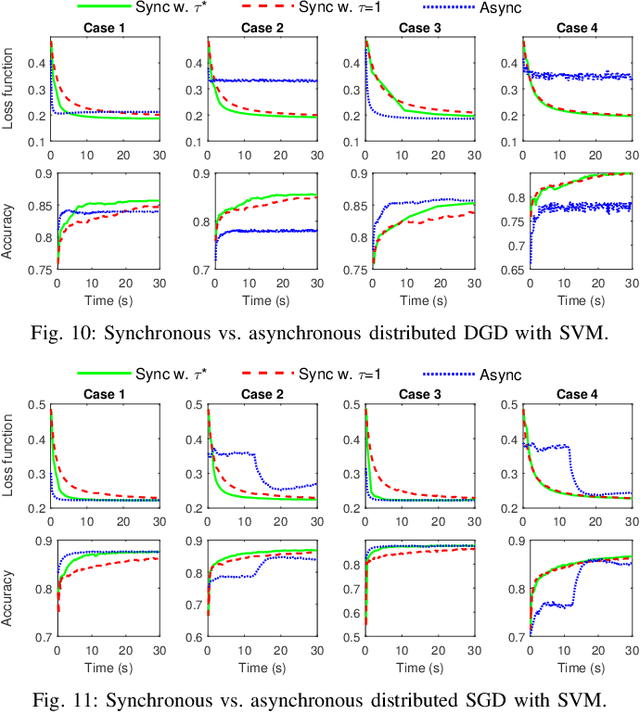
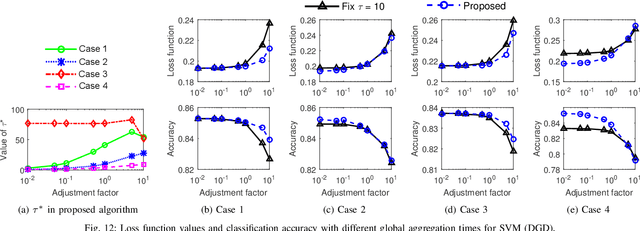
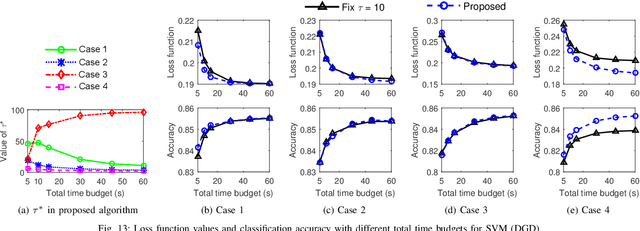
Abstract:Emerging technologies and applications including Internet of Things (IoT), social networking, and crowd-sourcing generate large amounts of data at the network edge. Machine learning models are often built from the collected data, to enable the detection, classification, and prediction of future events. Due to bandwidth, storage, and privacy concerns, it is often impractical to send all the data to a centralized location. In this paper, we consider the problem of learning model parameters from data distributed across multiple edge nodes, without sending raw data to a centralized place. Our focus is on a generic class of machine learning models that are trained using gradient-descent based approaches. We analyze the convergence bound of distributed gradient descent from a theoretical point of view, based on which we propose a control algorithm that determines the best trade-off between local update and global parameter aggregation to minimize the loss function under a given resource budget. The performance of the proposed algorithm is evaluated via extensive experiments with real datasets, both on a networked prototype system and in a larger-scale simulated environment. The experimentation results show that our proposed approach performs near to the optimum with various machine learning models and different data distributions.
 Add to Chrome
Add to Chrome Add to Firefox
Add to Firefox Add to Edge
Add to Edge